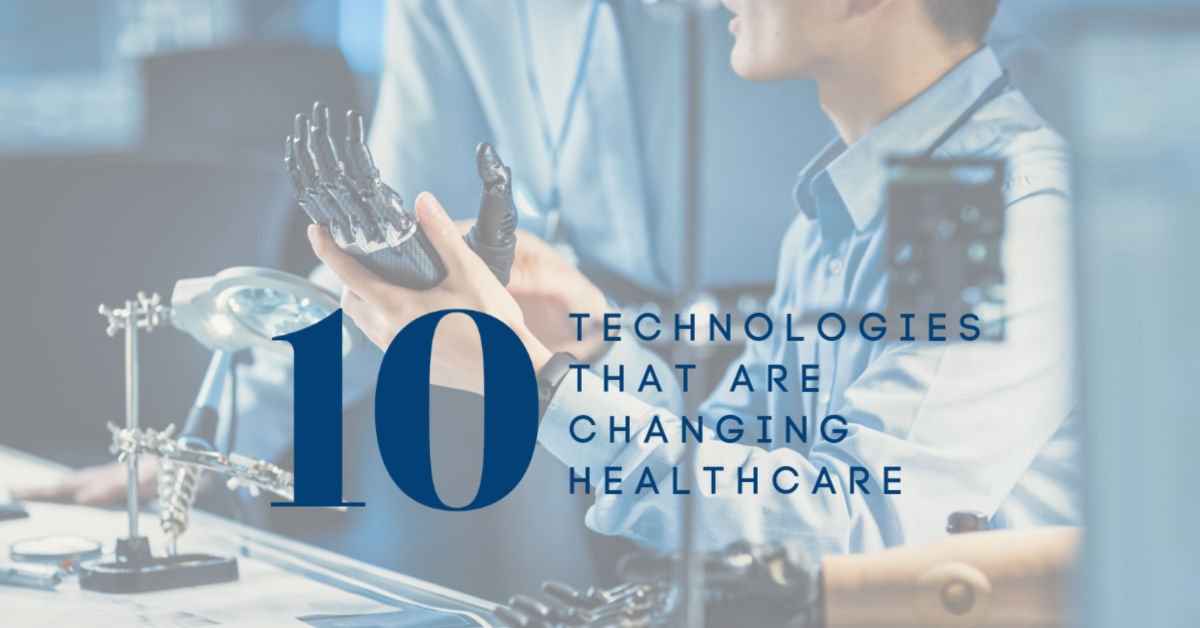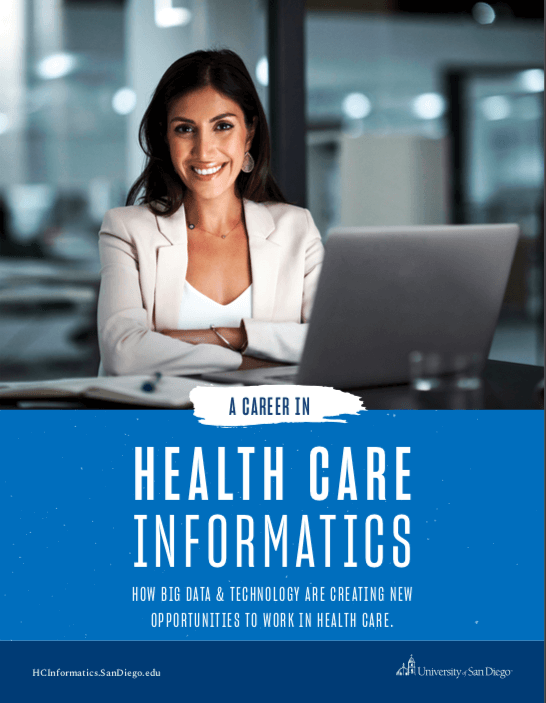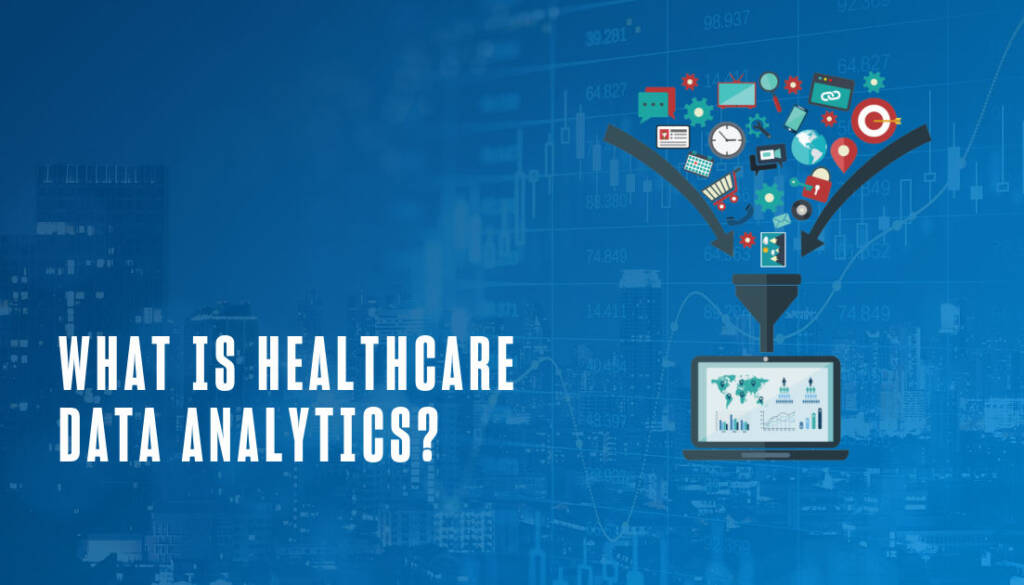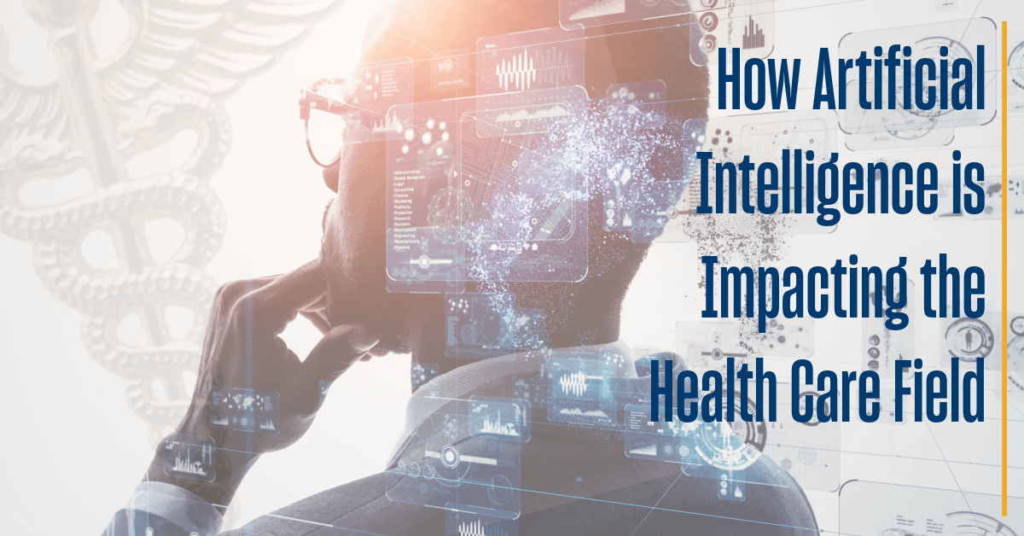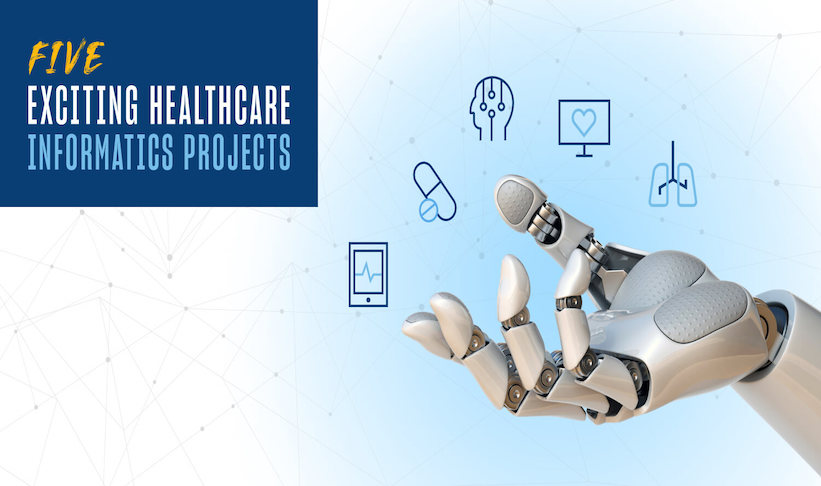Today, health informatics — a discipline that combines information systems, data, communications and medical care —is revolutionizing the health care industry. Technological advancements have sparked industry-wide innovation across all disciplines within the medical field. From artificial intelligence to 3-D bioprinting and beyond, technology is at the forefront of the ongoing transformation of the health care system.
Here are 10 ways health informatics and technology will shape the future of health care.
1. mHealth

mHealth, the use of mobile technology for patient care, is offering a much more convenient patient experience and streamlining care. An increasing array of mobile apps are enabling patients to better manage their health, communicate with healthcare providers, schedule appointments and access health information. The technology is also helping providers improve patient compliance with tools that provide remote monitoring of certain health conditions and medical devices. Wellframe, MedWand, WellDoc, Pager, Oscar Health and Vesta Healthcare are just a handful of mobile technology companies that are working on applications to transform how doctors and patients interact in the modern era.
2. Telemedicine
Telemedicine, much like mHealth, deals with virtual communication between patient and physician. With telemedicine, doctors are able to see and treat patients through video conferencing, eliminating the need for patients to drive to a physician’s office or clinic. Telemedicine is a boon for the thousands of people who don’t have access to medical care because they live in a remote location, lack transportation options or are not ambulatory.
The usage of telemedicine exploded in the wake of the COVID-19 pandemic in 2020. Telemedicine allowed doctors and nurses to ensure continuity of care for COVID and non-COVID patients, while protecting themselves and the public from infection.
[RELATED] The Best Health Informatics Websites and Blogs to Read and Follow >>
3. Electronic Health Records
As digital records of a patient’s health history, EHRs offer improved continuity of care for patients and better outcomes by ensuring that doctors are diagnosing and treating patients based on a holistic picture of their past and current health. EHRs have also improved coordination of care between providers, reduced health care disparities, and streamlined processes such as e-prescribing and telehealth.
In our digitally connected world, EHRs are not only allowing doctors to coordinate patient care and ensure accuracy, but patients are now more empowered to be their own advocates. Whatever information they need about their health history they can access instantaneously. Many clinics and hospitals have patient portals where they can access their records and lab results, and even communicate with their primary care physician. Further benefits of the widespread use of EHRs include:
- Improved patient care
- Improved diagnostics and patient outcomes
- Practice efficiencies and cost savings
[RELATED] How Health Informatics is Shaping Future of Health Information Management >>
4. Interoperable Healthcare Information Technology (Health IT) Systems
Interoperability refers to the ability to operate a secure system that allows instant access to and sharing of health data and information among authorized stakeholders, and only authorized stakeholders, no matter where they are located.
A more technical explanation is offered by the Healthcare Information and Management Systems Society (HIMSS). “Interoperability is the ability of different information systems, devices and applications to access, exchange, integrate and cooperatively use data in a coordinated manner, within and across organizational, regional and national boundaries, to provide timely and seamless portability of information and optimize the health of individuals and populations globally.”
Before interoperable Health ITsystems, patients would have to either track down all their medical records and share them with new doctors, hope that their medical network shared all information, or simply rely on giving doctors an oral history of their previous care. But with Health IT systems, health care providers can access all of a patient’s medical records and history, even if they are stored across numerous disparate computer systems in different locations. This is imperative to continuity of care and ensures that medical providers at any medical facility are getting a full picture of a patient’s medical history.
5. Wearables

Wearables offer yet another avenue beyond electronic patient records to collect data, increase prevention and improve health outcomes for users. The smart watch and Fitbit were some of the first and most well-known wearables, but there has been an explosion in the number and capabilities of wearables today.
A valuable feature of wearables is their ability to alert wearers and their doctors to sudden onset medical issues. Wearables collect real-time data that is then compiled and analyzed by a system that can inform doctors of an issue with their patient. This allows doctors to be proactive and reach out to patients who may need immediate medical attention without even realizing it. For example, patients with asthma can wear an ADAMM (Automated Device for Asthma Monitoring and Management). This monitor connects to an app and can proactively alert wearers and doctors of an oncoming asthma attack or other medical episode.
6. The Cloud & Data Analytics
With the plethora of data flooding into health centers through EHRs, wearables and more, the cloud and data analytics are becoming trusted mechanisms to store and share big data. IBM Watson has been a leader in cloud-based technology that is “bringing together clinical, research and social data from a diverse range of health sources” to advance care and speed up communication and health care innovation.
One example of the innovations made possible by IBM Watson cloud computing and data analytics happened at The Aurum Institute. The group centralized all clinical data collection, which allowed them to utilize cloud computing technologies to improve the efficiency and accuracy of the data capture and reporting. By optimizing these processes, the Aurum Institute could quickly determine actionable outcomes that would ordinarily be buried under endless amounts of data.
Data analytics programs and cloud solutions are allowing health care as a whole to operate and innovate faster and more efficiently than before. Analytics programs like Watson can weigh thousands of options and determine optimal outcomes in a fraction of the time a doctor could, using insights generated from real data. This enhanced speed in accessing information and informing decisions can make all the difference in health care.
7. 3D Bioprinting
This high-tech medical advancement is not fully formed, but has the potential to create drugs, prostheses, and even human tissue and organs. In 2018, scientists printed human ears and successfully attached them to the skin of mice, a huge step forward in the evolution of 3D printing.
Potentially even more exciting is a development in Australia, where doctors completed a successful implant of a 3D printed vertebrae into a human patient who had been suffering from chordoma cancer. 3D orthopedic implants are revolutionizing joint and bone replacement, creating better-fitting, longer-lasting and higher-performing implants. It is estimated that by 2027 more than four million orthopedic implants will have been used on patients.
The Kidney Project is currently developing a bioartificial kidney “as a permanent solution to end-stage renal disease.” They have even successfully implanted a prototype kidney bioreactor containing functional human kidney cells into pigs without significant safety concerns. This advancement could ensure that every eligible patient would have the option of receiving a transplant, not just those who make it to the top of the list.
[RELATED] Health IT Jobs – Salary & Job Info >>
8. Artificial Intelligence
New capabilities of artificial intelligence have led to real advancements in hospital settings. AI and machine learning are being utilized in health care and health informatics to help health care providers improve diagnostic accuracy and forecast the potential high-risk conditions. AI is also improving the personalization of care by giving doctors greater insight into patterns of symptoms and treatment strategies that enhance patient success. “Unlocking data [on health conditions] that historically we’ve made simple decisions about, AI allows us to get much deeper and look for associations the human brain isn’t able to do … but a computer can,” said David B. Agus, MD, a professor of medicine and engineering at the University of Southern California Keck School of Medicine and Viterbi School of Engineering.
9. Robotics
Because of the enhanced capabilities of AI and machine learning, robotics are playing a larger role in the administration of care and facility maintenance. Robotics equipped with robust AI capabilities are working as surgical assistants and delivery and transportation aids. In Sioux Falls, S.D., a robot named Xena is one of two robots the Avera McKennan hospital is employing to disinfect operating rooms and destroy superbugs, and has become a vital tool while fighting the COVID-19 pandemic. And in 2019, the FDA has given Zimmer Biomet Holdings clearance for the company’s ROSA robotically assisted total knee replacement surgery platform.
10. Blockchain
Blockchain is a technology that is improving data security across many industries, including health care. Blockchain is a shared, immutable ledger that facilitates the process of recording transactions and tracking assets in a business network. An asset can be tangible (a house, a car, cash, land) or intangible (intellectual property, patents, copyrights, branding). Virtually anything of value can be tracked and traded on a blockchain network, reducing risk and cutting costs for all involved. The idea is that the ledger cannot be altered by anyone once it’s entered, making that piece of data ultrasecure, but also accessible.
It is this highly secure, unalterable quality that is making blockchain appealing to health care providers. The U.S. National Library of Medicine sees blockchain being utilized to “improve medical record management and the insurance claim process, accelerate clinical and biomedical research, and advance biomedical and healthcare data ledger.” Blockchain will also empower patients to have greater control over the security of their medical information, such as who it’s shared with, when it’s shared and how much.
Technology’s role in health care applications is rapidly changing, but what isn’t changing is the central role that data, analytics and health informatics plays in the practical application of technology in patient care. This widespread innovation within the field will create new jobs and expand career pathways that never existed before. For anyone who is interested in pursuing a career that marries technology and innovation with the opportunity to help people, a career in health informatics is a great choice.
Specialized degree programs such as the online Master of Science in Health Care Informatics offered by the University of San Diego prepare professionals to fill this growing need with unique coursework that develops technical, programmatic and analytic competencies while addressing contemporary issues in informatics such as population health analysis, clinical documentation and workflow optimization and data security. Students can even specialize within the program, choosing to focus on analytics or informatics. By completing a master’s degree in health informatics, students will be able to keep up with, and even help improve these ever-changing technologies in health care.
